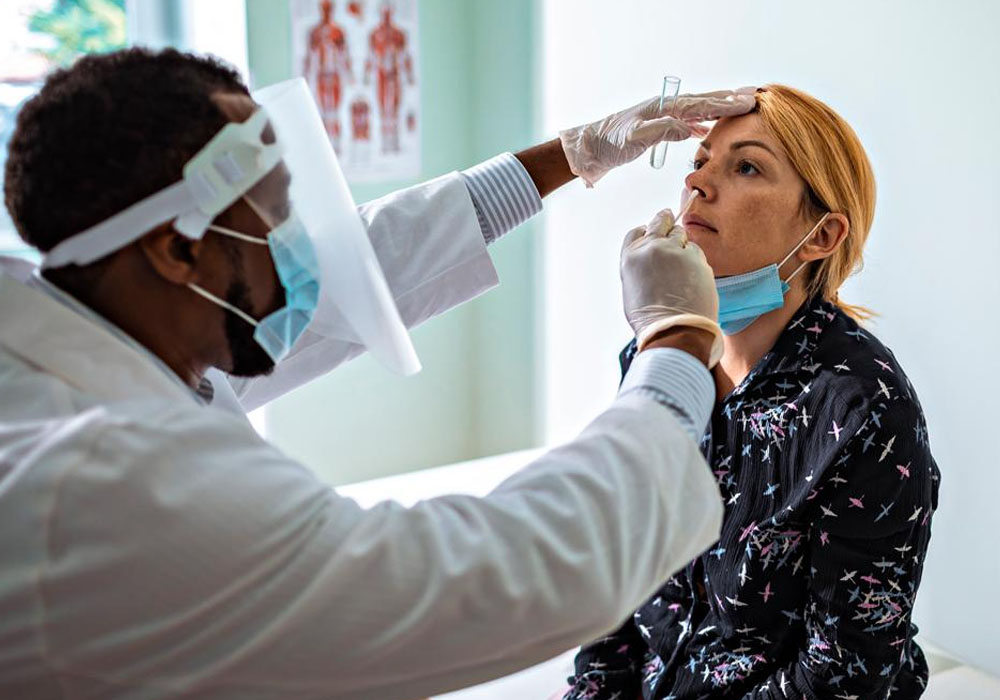By now, you’re probably used to images of people queuing outside a clinic for a COVID-19 test. They’re waiting for a PCR (polymerase chain reaction) test.
Rapid antigen tests (RATs) are different. The good news is they’re quick, convenient and can sometimes detect COVID-19 even before you have symptoms. You can do the test yourself at home or anywhere you feel comfortable. However, they’re not as accurate as PCR tests.
Both types of test are designed to detect COVID-19 in your body, and involve a swab sample taken from your throat or nose, on nasal secretions (‘snot’), or sometimes on saliva.
Here’s what you need to know about ‘RATs’.
What is a rapid antigen test (RAT)?
Rapid antigen tests can detect whether proteins of the COVID-19 coronavirus are present in your body.
RATs can sometimes detect COVID-19 before you develop symptoms. They’re not as accurate if you don’t have symptoms and can produce either false negative or false positive results.
RATs are quick — returning a result within 10 to 20 minutes. You can do the test at home and in your own time, and without a doctor.
What’s point-of-care testing, and antibody self-tests?
The test you do at home is known as a rapid antigen self-test. However, some schools and workplaces test regularly to avoid a COVID-19 outbreak and use rapid antigen point-of-care testing. These tests are carried out by health professionals or trained people working under supervision. They can provide clinical advice and treatment if needed.
Rapid antigen tests are different to rapid antibody self-tests, which can’t be sold for general use in Australia. Rapid antibody tests only show whether a person has been previously infected with COVID-19.
How accurate are rapid antigen tests?
RATs can detect COVID-19 during the ‘acute’ phase of infection — especially just before you show symptoms and in the week after symptoms first appeared. But they’re still not as reliable as PCR tests.
It’s very important to follow the instructions on the packaging in order to get an accurate result.
When should I have a rapid antigen test?
So, if rapid antigen tests are less reliable than PCRs, and they’re not always free like most PCRs, why have one? Well, there are a few reasons:
- RATs are a good solution if you have COVID-19 symptoms but can’t access a PCR testing clinic.
- If you want to quickly check if you’re likely to have COVID-19 — such as if you’re about to visit an aged-care facility or go to a party — you could have a RAT.
- If your school or employer has a COVID-19 surveillance program in place, you may be asked to have regular rapid antigen point-of-care tests.
- You might need to have a RAT if a state or territory health department requires it.
Note: in some situations — such as to meet international travel requirements — having a PCR test may be your only option.
Where can I buy a rapid antigen test?
Currently, the supply of RATs isn’t meeting demand — although it’s expected to improve soon. You may be able to buy a RAT kit either online or from pharmacies and retailers, including major supermarkets. Pick up some cotton buds while you’re there if the test says you need them for the swab.
Only use tests that have been approved by the Therapeutic Goods Administration (TGA). See the TGA’s list of approved tests here, including links to videos on how to use each test. This list is updated regularly.
How do I use a rapid antigen test?
For accurate results, follow the instructions on the packaging.
Ensure the test hasn’t passed the expiry date and that you do it at a particular temperature, if that’s what the instructions say. There’ll also be directions about preparing the surface on which you place the indicator device and how you collect the nasal secretion or saliva sample.
Make sure you read the result at the specified time, too — if you wait too long, the result may no longer be accurate.
What do I do when I get the result?
- If your result is positive, you should isolate at home for at least 7 days. Your state or territory may require you to report your result or confirm it with a PCR test, so check your local health department website.
- You can call or attend an emergency department if your symptoms are severe.
- Contact your GP or health service if you’re aged 65 or over, pregnant, have any chronic conditions or have any concerns about your health. Your assessment may be over the phone or by video.
- If it’s negative, then you’re good to go, right? Not necessarily. If it’s negative but you still have symptoms or feel unwell, arrange a PCR test. If the PCR test’s negative and you don’t have symptoms or feel unwell, just monitor for symptoms.
- It’s possible to get an ‘invalid’ result, which means the test hasn’t worked properly. The instructions will tell you what an invalid result looks like. Throw the test away and perform a new test.

